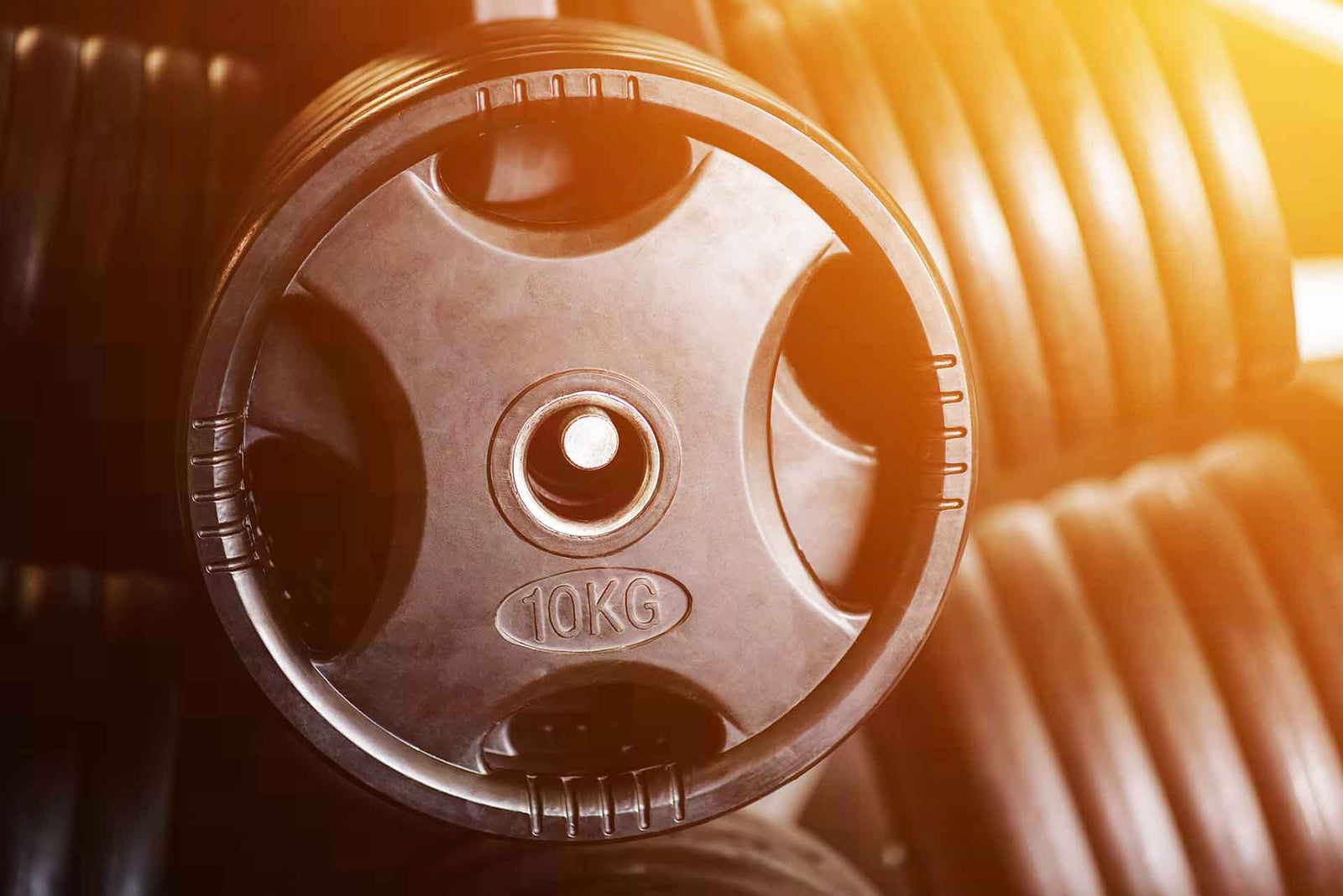Weight plates are a fundamental part of any strength training routine, allowing you to progressively increase resistance and build muscle efficiently. Whether you're a beginner adding resistance to your workouts, a powerlifter focusing on heavy lifts, or a CrossFit athlete needing durable bumper plates, choosing the right weight plates maximizes performance and safety.
All our weight plate products offer versatility to your workouts and optimise the exercises, whether that is Standard, Olympic, Cast Iron or Vinyl plates. This guide covers the different types of weight plates, key buying considerations, and how to integrate them into your workouts for maximum gains.
Why Choose the Right Weight Plates?
Selecting the correct weight plates ensures you get the most out of your strength training while protecting your equipment and flooring.
Key Benefits:
✅ Supports Progressive Overload – Gradually increase resistance to build strength safely.
✅ Versatile for Different Workouts – Use with barbells, dumbbells, and plate-loaded machines.
✅ Improves Lifting Safety – High-quality materials prevent slippage and equipment damage.
✅ Durable for Long-Term Training – Cast iron, rubber-coated, and bumper plates last longer.
✅ Customizable Training Options – Choose standard or Olympic plates based on lifting style.
How Weight Plates Enhance Your Strength & Muscle Gains
Weight plates allow for customized resistance training, whether you’re powerlifting, bodybuilding, or training for endurance.
🏋️ Builds Strength & Muscle Mass – Allows for progressive resistance in compound lifts.
🔥 Enhances Power & Speed – Ideal for Olympic lifting and explosive training.
🦵 Targets Specific Muscle Groups – Load weight for squats, deadlifts, presses, and curls.
🩹 Improves Joint Stability – Helps strengthen connective tissues and improve balance.
Choosing the Right Weight Plates
Your ideal weight plates depend on training style, compatibility, and budget.
Step 1: Define Your Training Needs
🏋️ Powerlifting? Choose Olympic cast iron plates for durability and precision.
🏋️ CrossFit & Functional Training? Bumper plates protect floors and absorb impact.
🏋️ Home Gym Setup? Consider rubber-coated plates for noise reduction and safety.
Step 2: Consider Weight Plate Compatibility
📏 Standard Plates (1-inch hole): Compatible with regular barbells and home gym equipment.
📏 Olympic Plates (2-inch hole): Designed for Olympic barbells and commercial gym setups.
Step 3: Set a Budget
💰 Entry-Level (£50-£150): Basic iron plates, great for beginners.
💰💰 Mid-Range (£150-£400): Durable, coated plates for versatile training.
💰💰💰 Premium (£400+): Competition-grade bumper plates, precision calibration.
Step 4: Key Features to Consider
🎯 Material & Durability: Cast iron for longevity, rubber-coated for protection.
🎯 Grip Design: Cut-out handles allow for easy lifting and movement.
🎯 Weight Accuracy: High-quality plates ensure consistent weight distribution.
Types of Weight Plates
There are several types of weight plates, each designed for specific lifting styles.
Standard Cast Iron Plates
🔹 Key Benefit: Classic, heavy-duty plates for traditional lifting.
🔹 Best For: Powerlifting and home gym setups.
Rubber-Coated Weight Plates
🔹 Key Benefit: Reduces noise and protects flooring.
🔹 Best For: Home gym users and general strength training.
Bumper Plates
🔹 Key Benefit: High-impact resistance, suitable for Olympic lifts.
🔹 Best For: CrossFit, Olympic lifting, and functional training.
Olympic Competition Plates
🔹 Key Benefit: Precision-calibrated weight for competition use.
🔹 Best For: Serious lifters and professional athletes.
Fractional Plates (Micro Plates)
🔹 Key Benefit: Allows for small weight increases.
🔹 Best For: Strength progression and microloading.
Comparing Different Weight Plate Models
Each weight plate offers unique advantages, depending on your workout style and lifting goals.
Standard vs. Olympic Plates
🔹 Standard: Smaller barbell hole, best for general home workouts.
🔹 Olympic: Larger hole, best for powerlifting and Olympic lifting.
Cast Iron vs. Bumper Plates
🔹 Cast Iron: Heavier, more compact, great for traditional lifting.
🔹 Bumper: Shock-absorbing, safer for drops, great for Olympic training.
Budget vs. Premium Weight Plates
🔹 Budget Plates: Affordable, standard durability.
🔹 Premium Plates: Higher precision, enhanced durability, competition-grade quality.
How to Use Weight Plates for Maximum Gains
Weight plates support a variety of strength training methods, from traditional lifts to functional training.
Compound Strength Training
✅ Squats & Deadlifts – Load barbells for lower body strength.
✅ Bench & Overhead Presses – Develop upper body power.
Functional & Explosive Training
✅ Olympic Lifts (Snatch, Clean & Jerk) – Train power and speed.
✅ Plate Swings & Carries – Improve core and grip strength.
Progressive Strength Progression
✅ Increase weight gradually for muscle growth and endurance.
✅ Use fractional plates to make incremental strength improvements.
Safe & Effective Lifting Techniques
✅ Secure plates with collars to prevent movement during lifts.
✅ Use bumper plates for exercises requiring barbell drops.
Final Thoughts
Weight plates are a core component of strength training, offering progressive resistance for muscle growth, power, and endurance. Whether you're building a home gym, training for strength sports, or improving overall fitness, the right weight plates maximize your potential.
👉 Ready to upgrade your strength training? Explore our full range of weight plates today!

